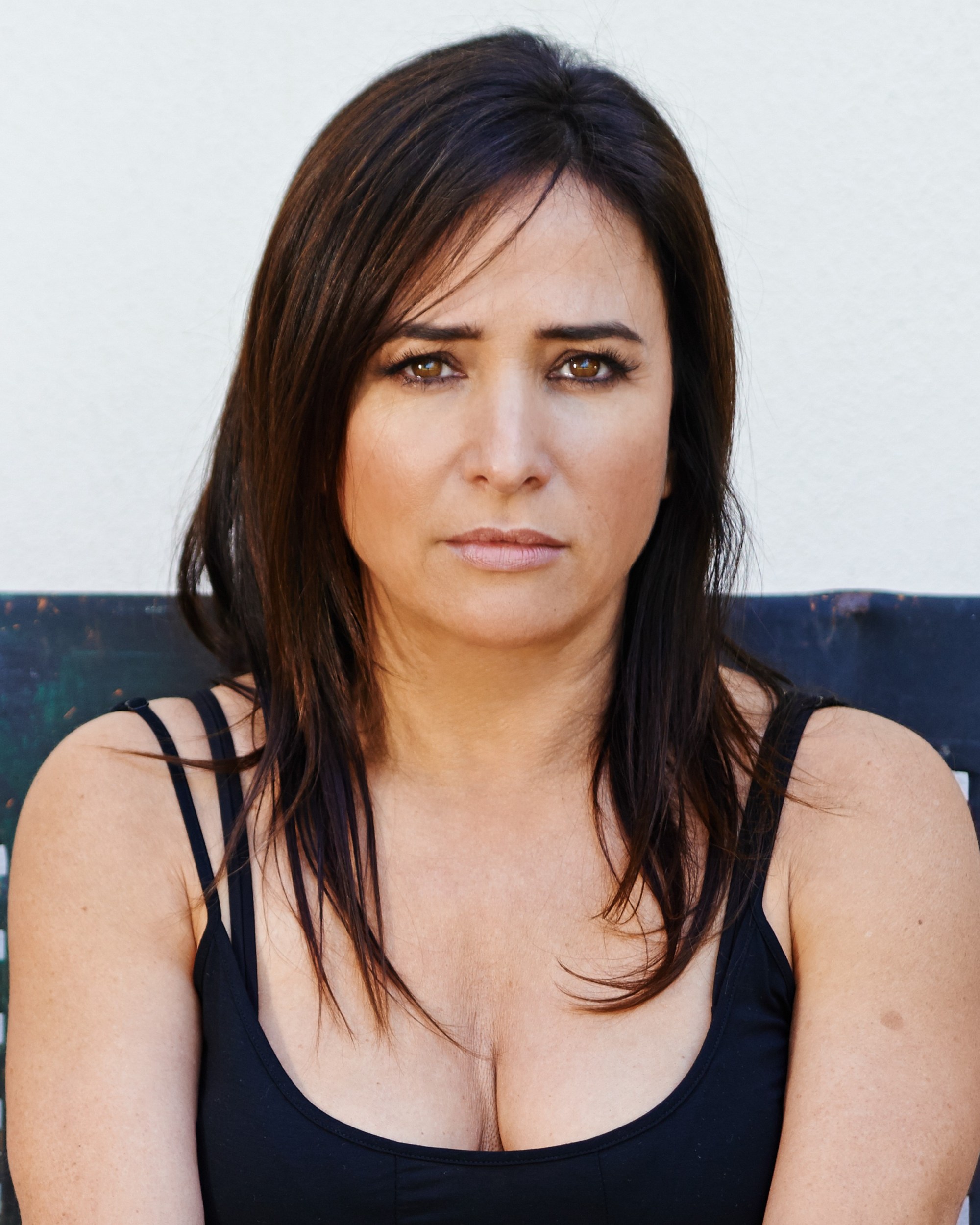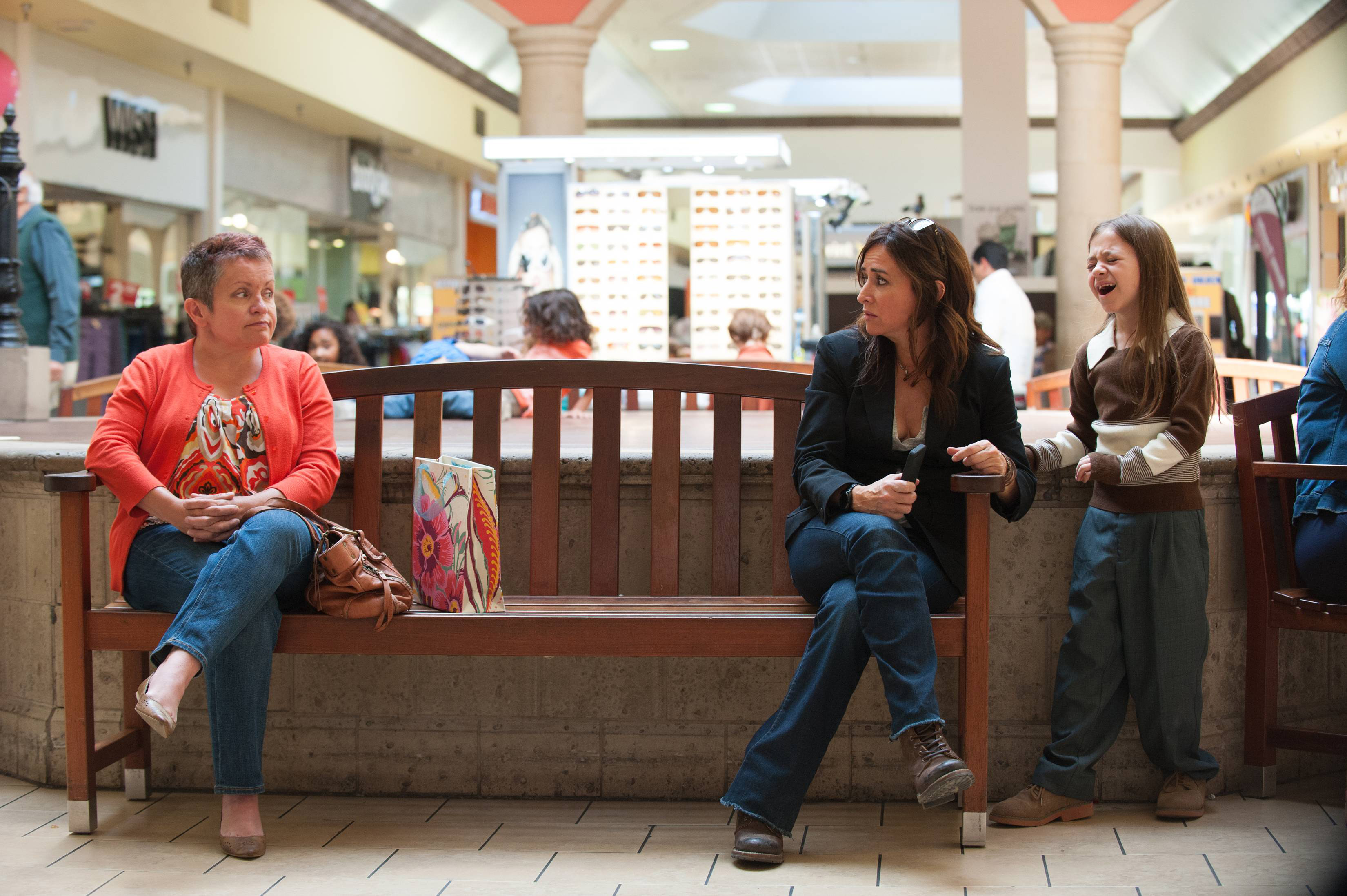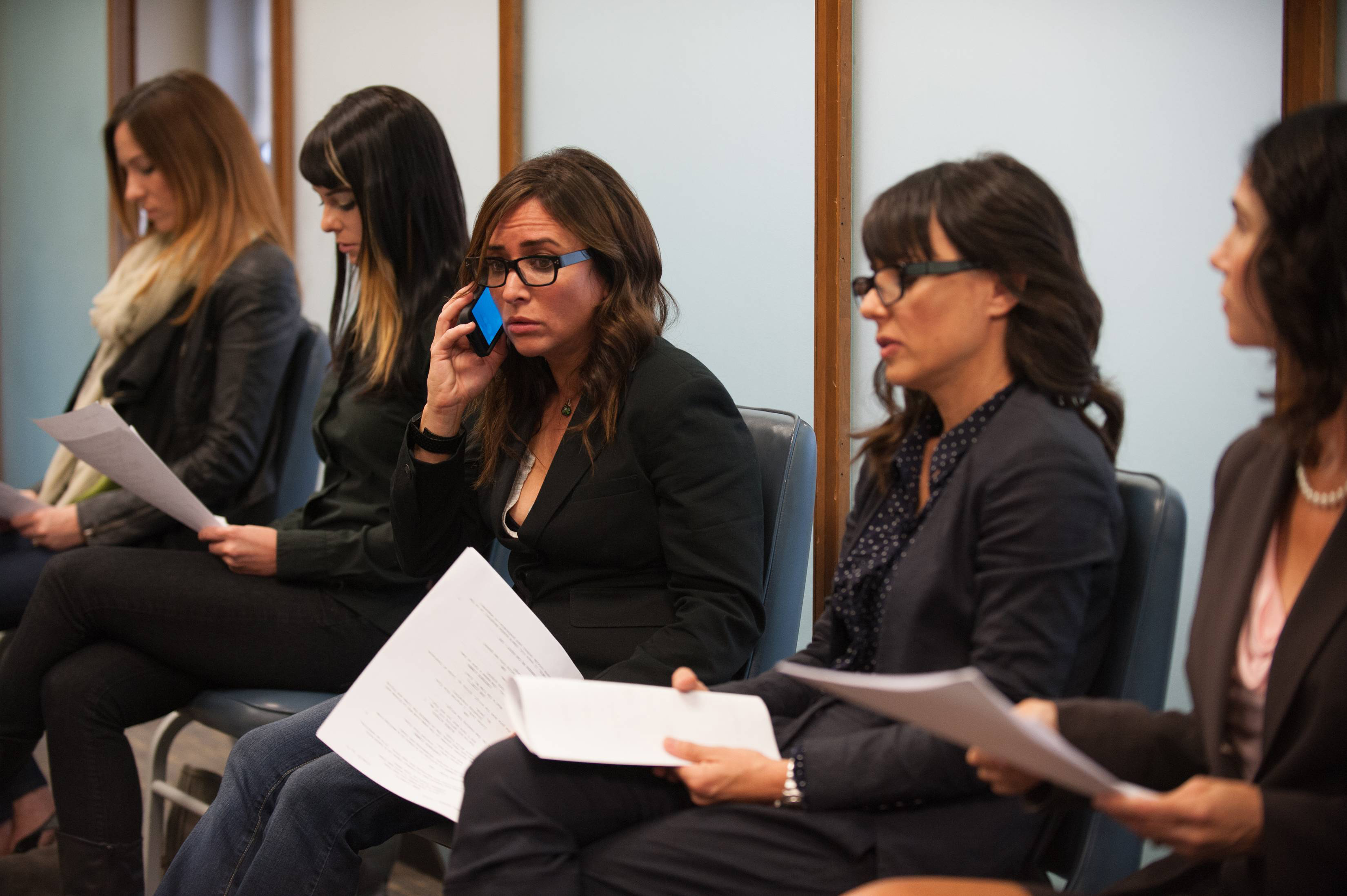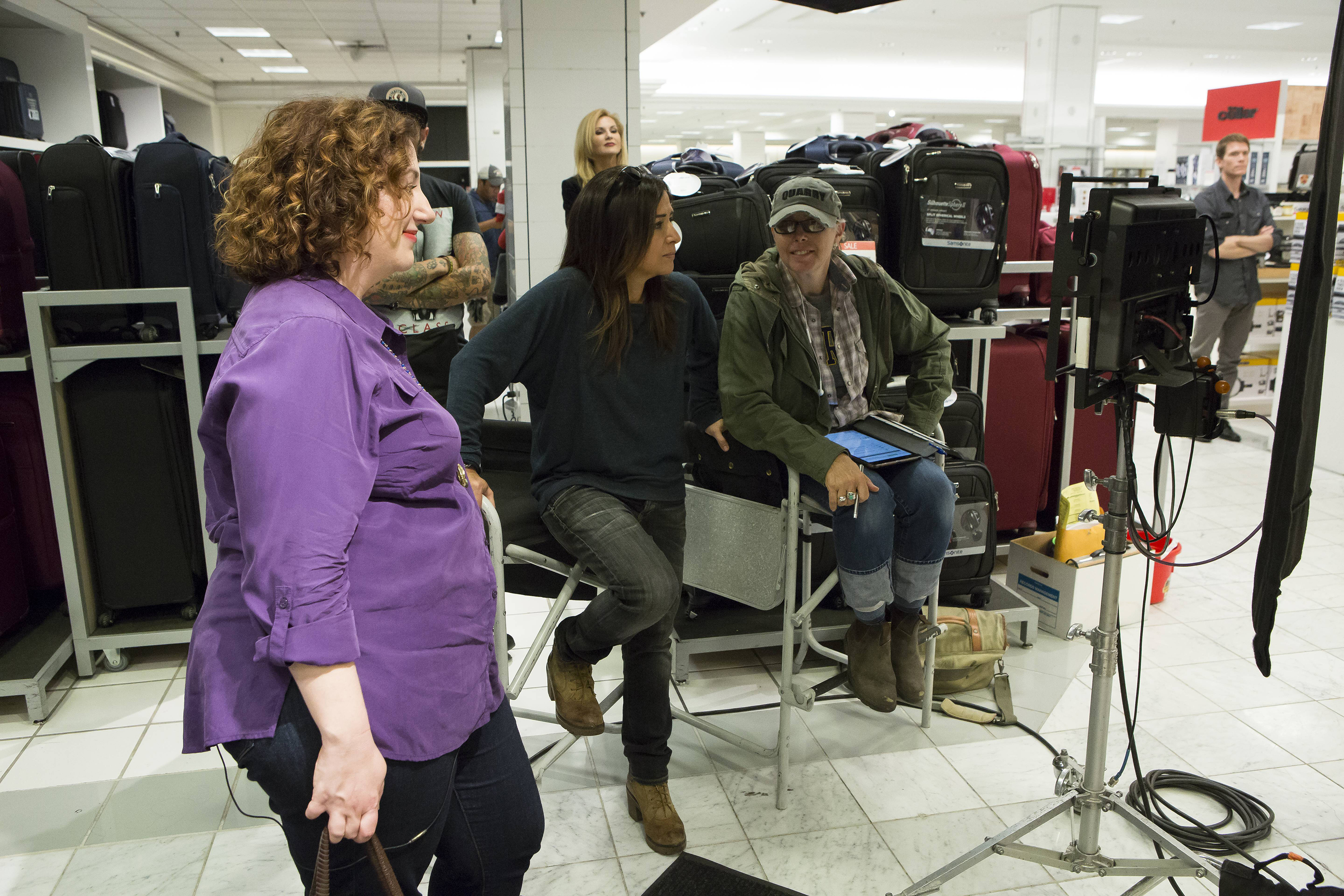
- Industry
Multi-Hyphenate Pamela Adlon: Finally Getting a Chance at Better Things
Better Things (premiering on FX September 8, 2016) gives Pamela Adlon titles few women are able to access individually, never mind altogether. “Yeah, I’m the writer, producer, actor.” She admits in her raspy voice. I think she’s done but no, she’s just taking a breath. “Director. I also helped cast the extras and I chose the art and music. Every single thing is really my work. FX allowed me to make a really handmade kind of show – even down to the opening titles.” She pauses again and then laughs delightedly. “In case you’re wondering, yes, the handwriting in the opening credits is mine too, plus the choices of artwork on the walls. They really went all in with me.”
A different feeling from how it used to be. “There is an ambiguousness to the way I am,” she gives a sideways tilt to the box and labels Hollywood squeezes women into, the physical norms that are held as a standard and the branding of traits that have been co-opted as male and seen as ‘other’ if a woman should own them. “It’s just a masculine trait to be aggressive and ball busting and consumptive in life and all things.” She tries to explain. News to a lot of women who are aggressive, ball busting – and well, you get it. “I feel I have always straddled the line being masculine and feminine – all things in one. For years people have tried to find a place for me.”
Given the penchant for women to be cast in supporting roles of the wife, mother, girlfriend, or in service to the protagonist, usually a male, you can see why Pamela may not have slipped into innocuous easily. “People who like me would go, ‘I really like her, but she is weird. I don’t know where to put her.’ More often than not I would not be able to be a part of something.”
Until a show like Californication came around that is. “Marcy was a woman, but with a man living inside her body.” She elaborates, “People would say to me that Marcy was like the female Hank in Californication.” The analogy sounds strange. Most women would think that Marcy was just an individual; the friendship she developed with David Duchovny during those years yielded a cameo he did on her new show. Actually, a lot of ‘names’ like Lenny Kravitz, crop up in Adlon’s show now that she’s getting to use her voice.
And watch out world – when you give the silent a stage the outpourings will surprise and delight. The first thing you notice about Better Things is that it reflects life. Not the op-art life of tidy little borders with stereotypes representing hollow cut-outs of paint-by-number characters, but the full blown reality of diversity saying things people think, or the unheard snickers the biased whisper behind their hands. “For me having people who are gay, people of color – and everything else, was important for me,” Susan says. “Also to not have to explain things, but let the stories play out and let the viewer catch up with information as they are watching. So many of my friends and family are gay and they are not obviously a stereotypical ‘something’. Everybody is 1 million different colors and ethnicities in my world, so I needed to see that in my show. I don’t want to point things out. I just want the moment to play.”
The other unusual aspect about the show is that it features five women leads – and can be found on that bastion of masculinity – FX. John Landgraf, the network’s President and General Manager, gets points for going against type and specifically seeking out a show targeted at the other sex. Already affiliated with the network in Louise C.K., as the titular character’s girlfriend, Pamela Adlon jumped at the chance to put her own show together. But like many single mothers she was working several jobs at the time the conversation about Better Things began. “My first thought was, ‘I want this – but how am I going to do it? I’ve got my three daughters, I’ve got my animation world (she does voice work), oh, and by the way, and I’ve got these other two jobs too?’ But she didn’t say, ‘no’. She leaned in and began developing the project.
I wanted to see women who are middle aged – whatever that is – represented in a way where we aren’t all perfectly dressed and coiffed. I want them to feel authentic and to talk the way my friends and I talk. This very real thing when women stop withholding from each other, that’s hugely important, like if somebody has something that they do to make themselves feel better, or if they had a medical situation, or with the marriage of a boyfriend – it’s a big gift when people really open up to each other and are completely honest with each other. I wanted to put that in my show.”

In so doing she connects with women in a way that wouldn’t have happened if the show had been created by a man for a woman. She captures the moments many women go through alone, the quiet moments of bravery, exhaustion and hilarious gaffes. “I never felt I fit in with certain groups. Certainly when I was a teenager in my 20s or 30s, I didn’t know how to be a real lady-like type person.” I ask what that is, and she demurs saying by way of reply. “I remember the first mommy and me group I was in with my oldest daughter. All these moms would have these big light saber wedding rings and they would feel like they got all their shit together completely. They would be able to make brownies for the class and be the head room-mom. I felt like I was trying to catch up and compete, and be in there – and you never can really match anyone else.” She states the truth that every grown-up embraces.
“I started to really settle into myself when I became a single mom.” She confesses. “I started to relax and realize that I was doing everything I could to be the best mom I could, and the best woman I could be.” “Suddenly I wasn’t devoting all of my time to how do I drive my daughters somewhere, or I must focus on my career, or my relationship. At the end of the day you are with you. Yes, you are with your kids, but then you are with yourself.”

Since the show is about motherhood it’s not sexist to ask how she wears all these hats and raises three girls too. She laughs. “My friends who didn’t have any kids would talk about how they didn’t know what to do on Saturday – to see the movie or go to the beach. And I would be ‘Oh, goodness, how do you do that?’ I’d be fascinated. I remember when people used to say, “Have a good weekend and it was a long weekend and I would be: ‘This is like a death sentence. A four-day weekend. What am I going to do? I’m not going to sleep and then usually the girls would get sick or something would come up. Just trying to get your time.”
That exhaustion is the reality of trying to do it all perfectly. Some might say women have traded having nothing to having it all and no one talks about the cost. “I was born in the 60s. There was a time where people would say, ‘You meet somebody, get married and start a family. You do things in that way. But conventions, as a society, they become suffocating. They are more hurtful than helpful because you can’t say: ‘Only this is a family – a mom and a dad and kids because there are so many different versions of families and relationships. It doesn’t have to be that you both sleep in the same bed every night. You come together as families that are divorced. Unconventional arrangements are things that my friends and I talked about years ago. It’s about the way you live, a righteous life for yourself or your kids or friends – however you live your life. Conventions are really difficult. It’s too much in the world. When you speak about religions and extremism, everything has been so formatted and it needs to fall away. The way I live my life and the way I’m trying to portray things in my show is that it not only takes a village to raise kids but to live your life.”

Better Things debuts on FX September 8, 2016.

